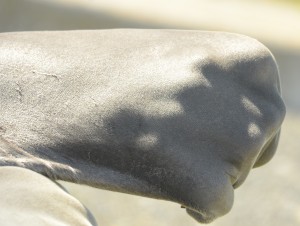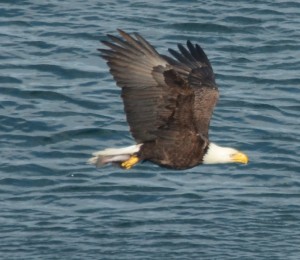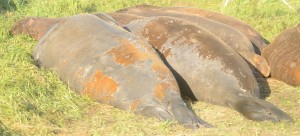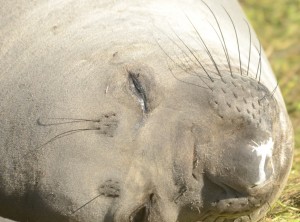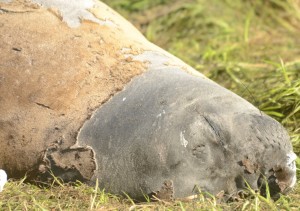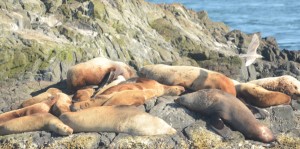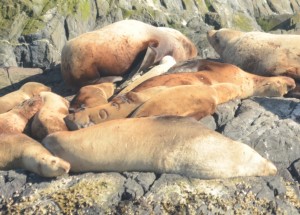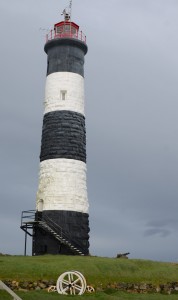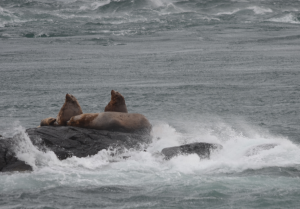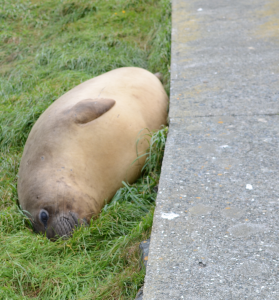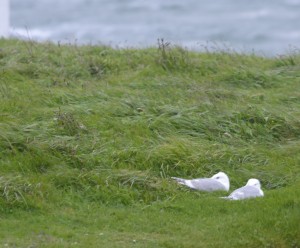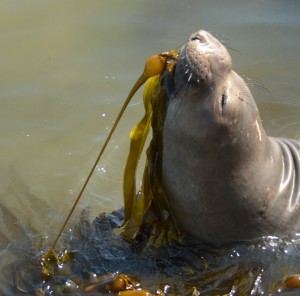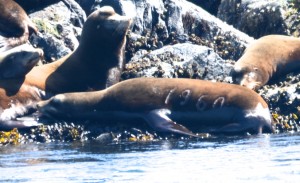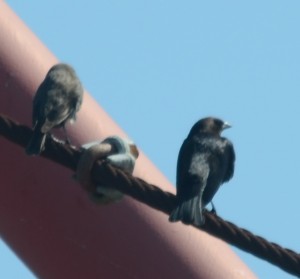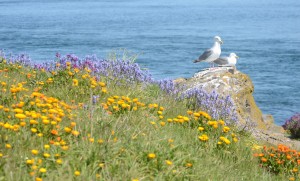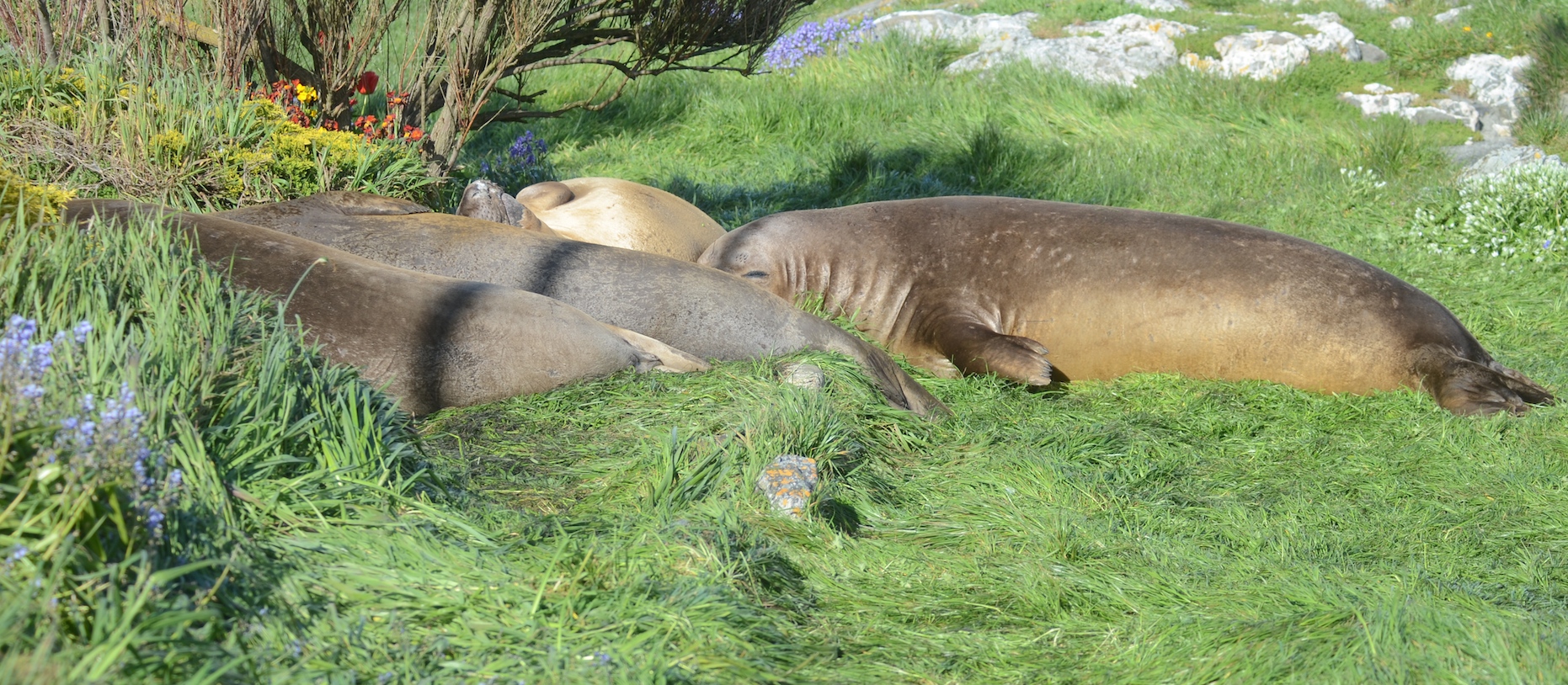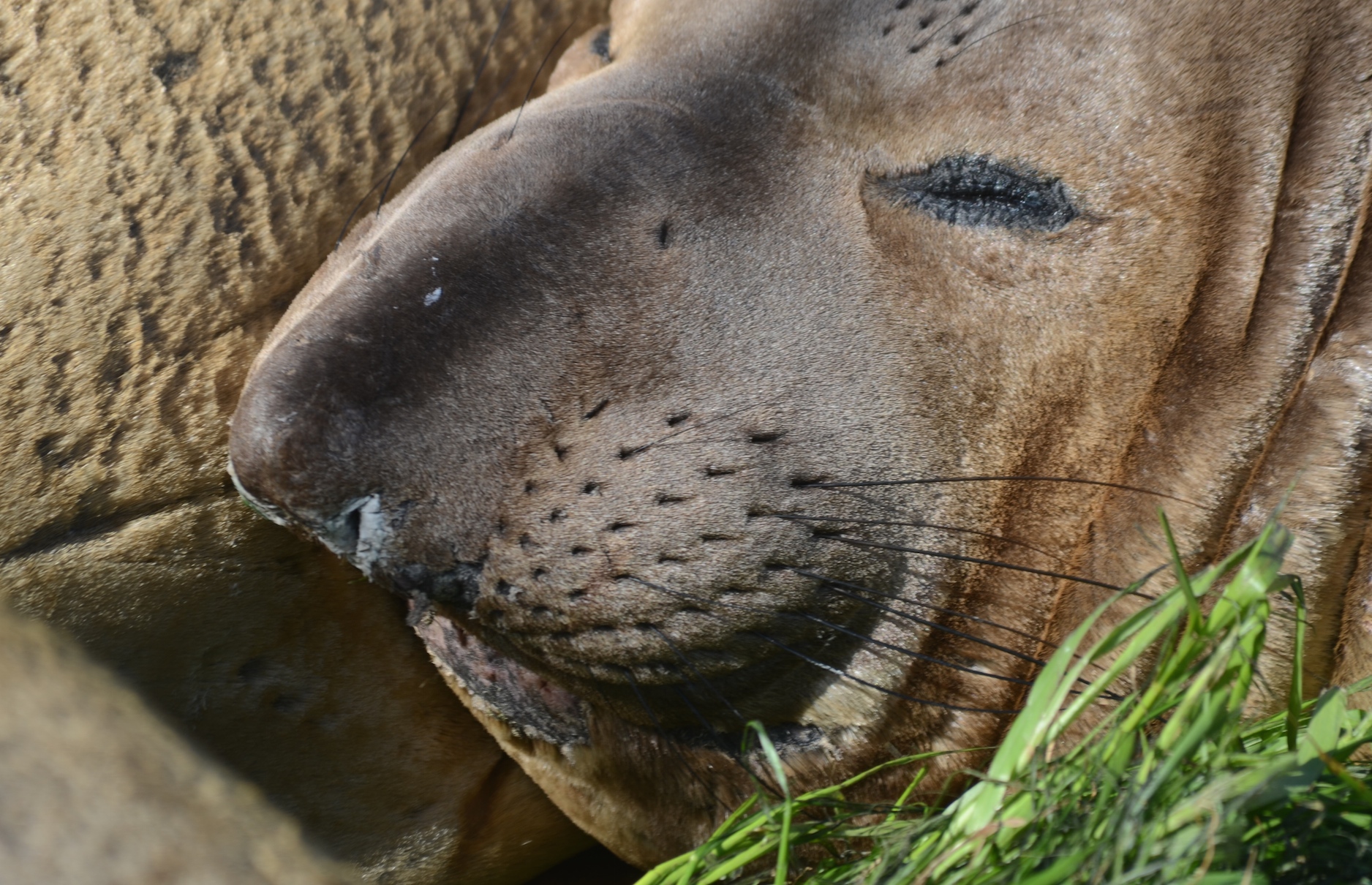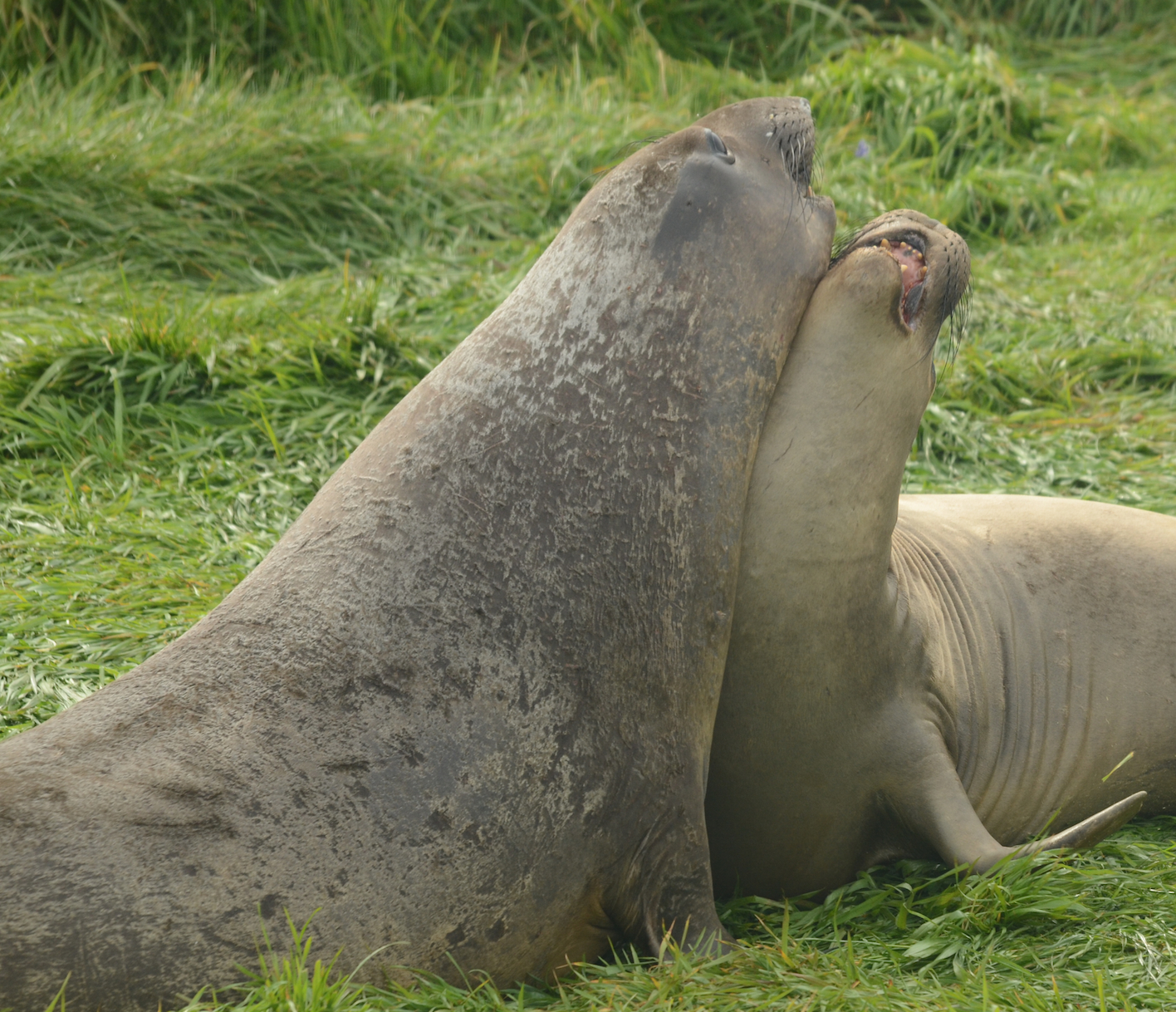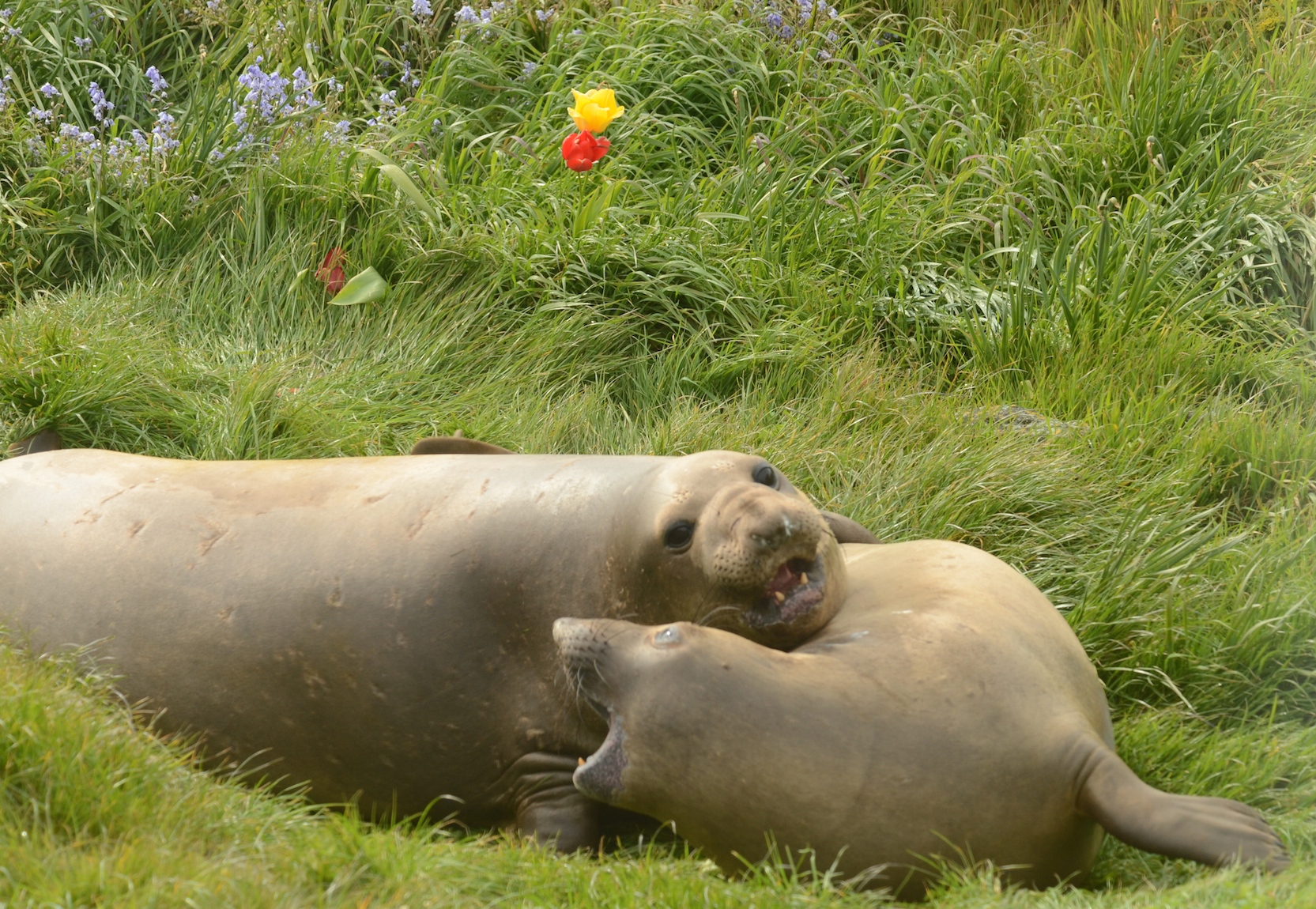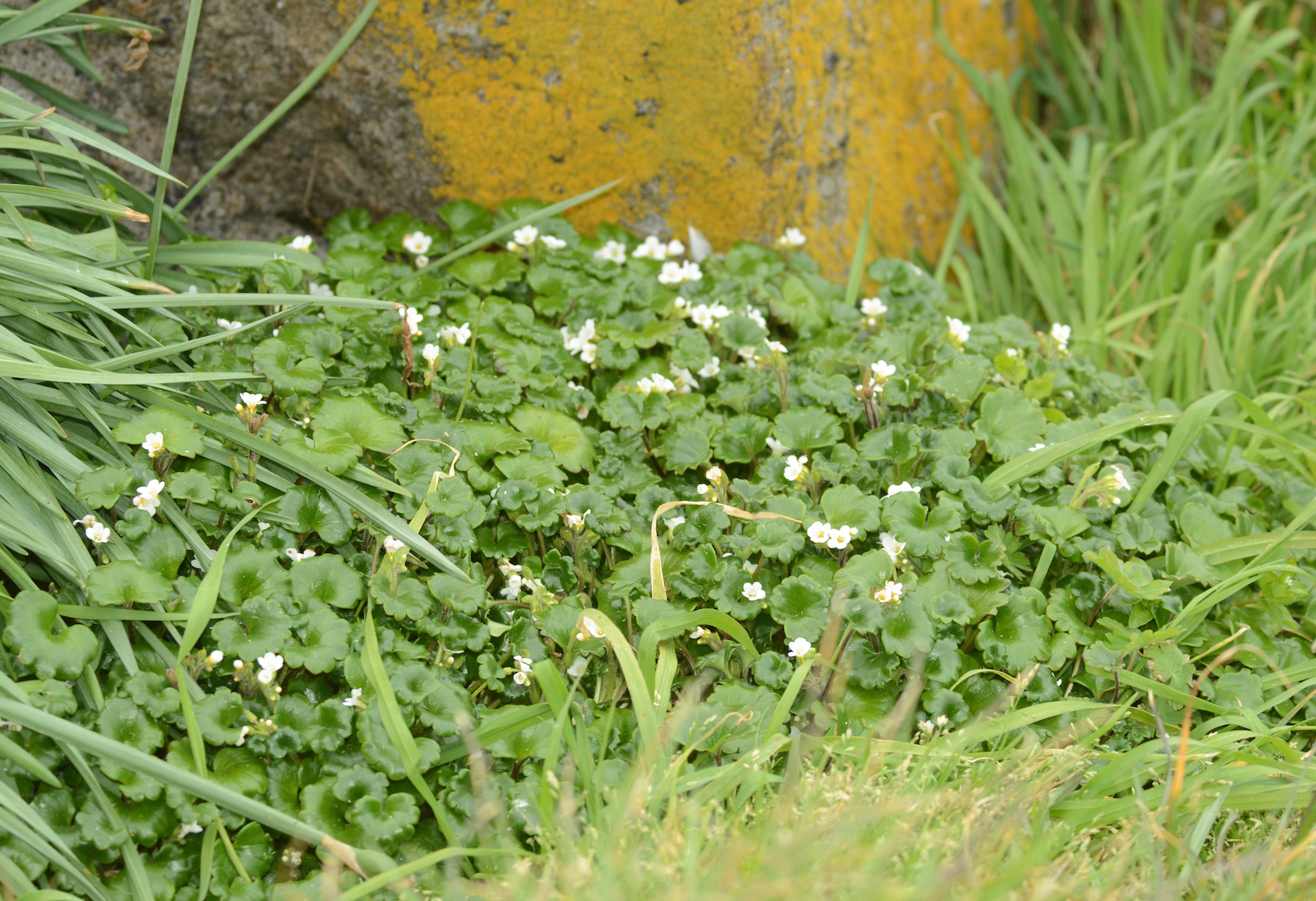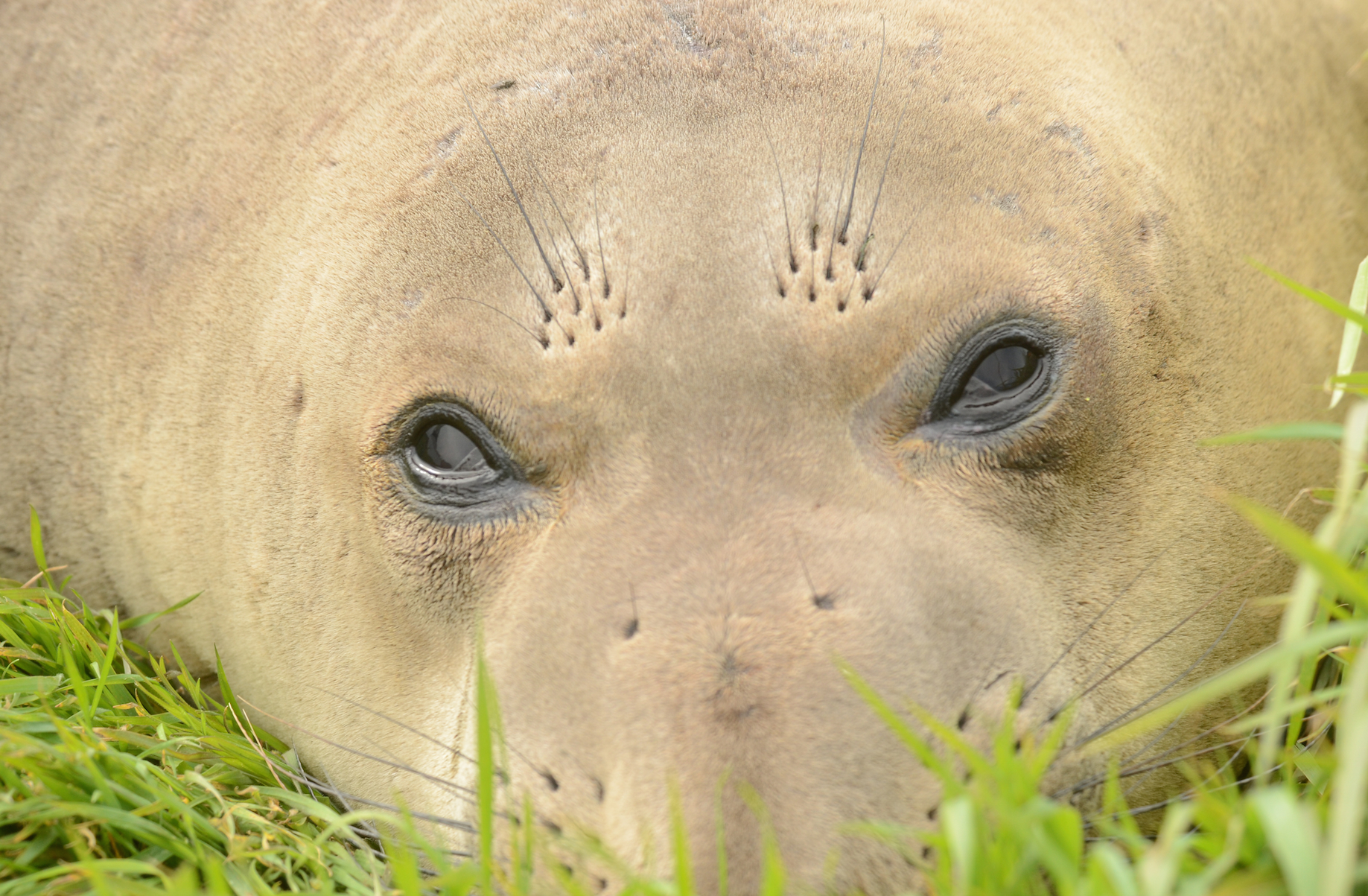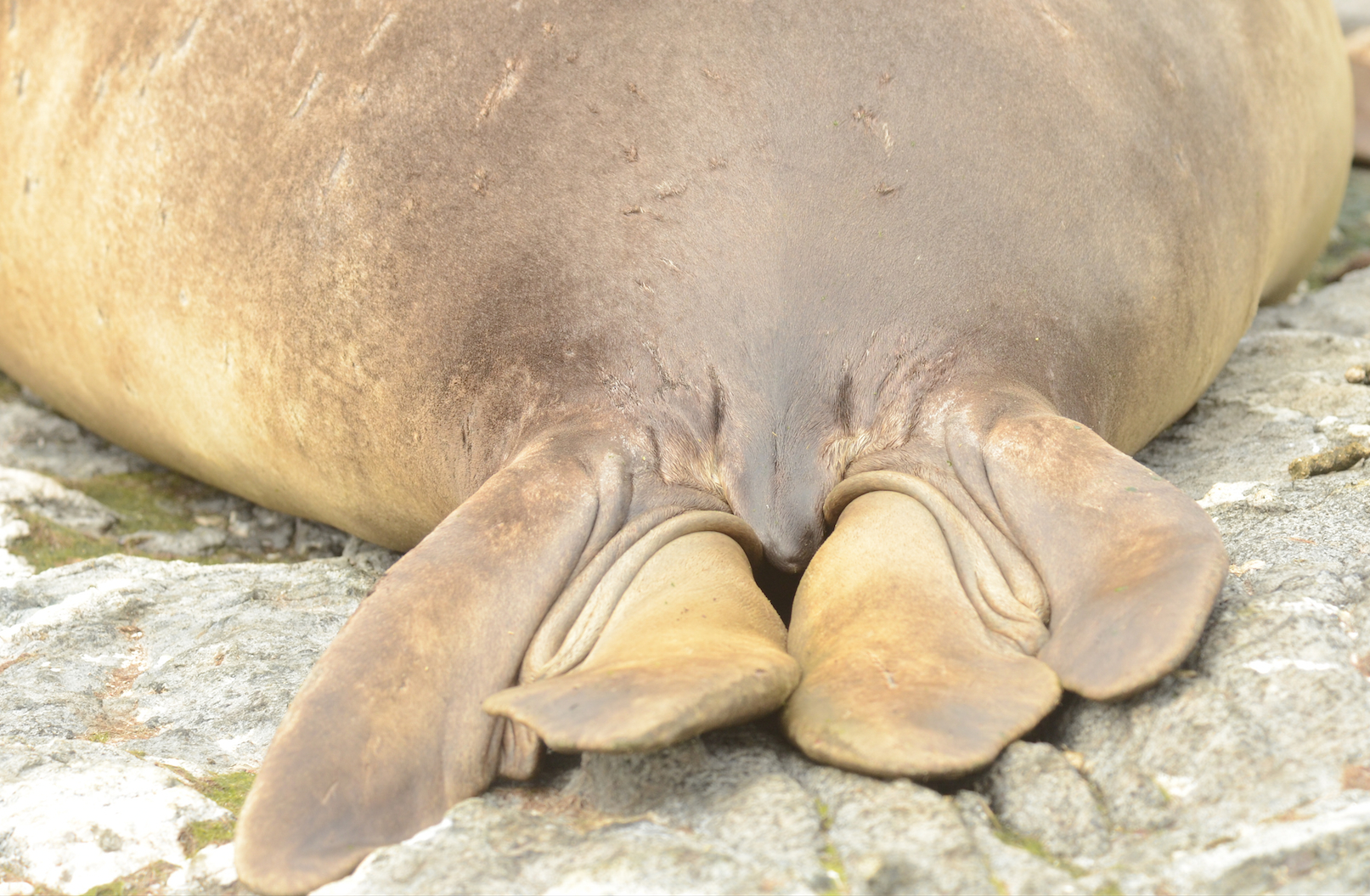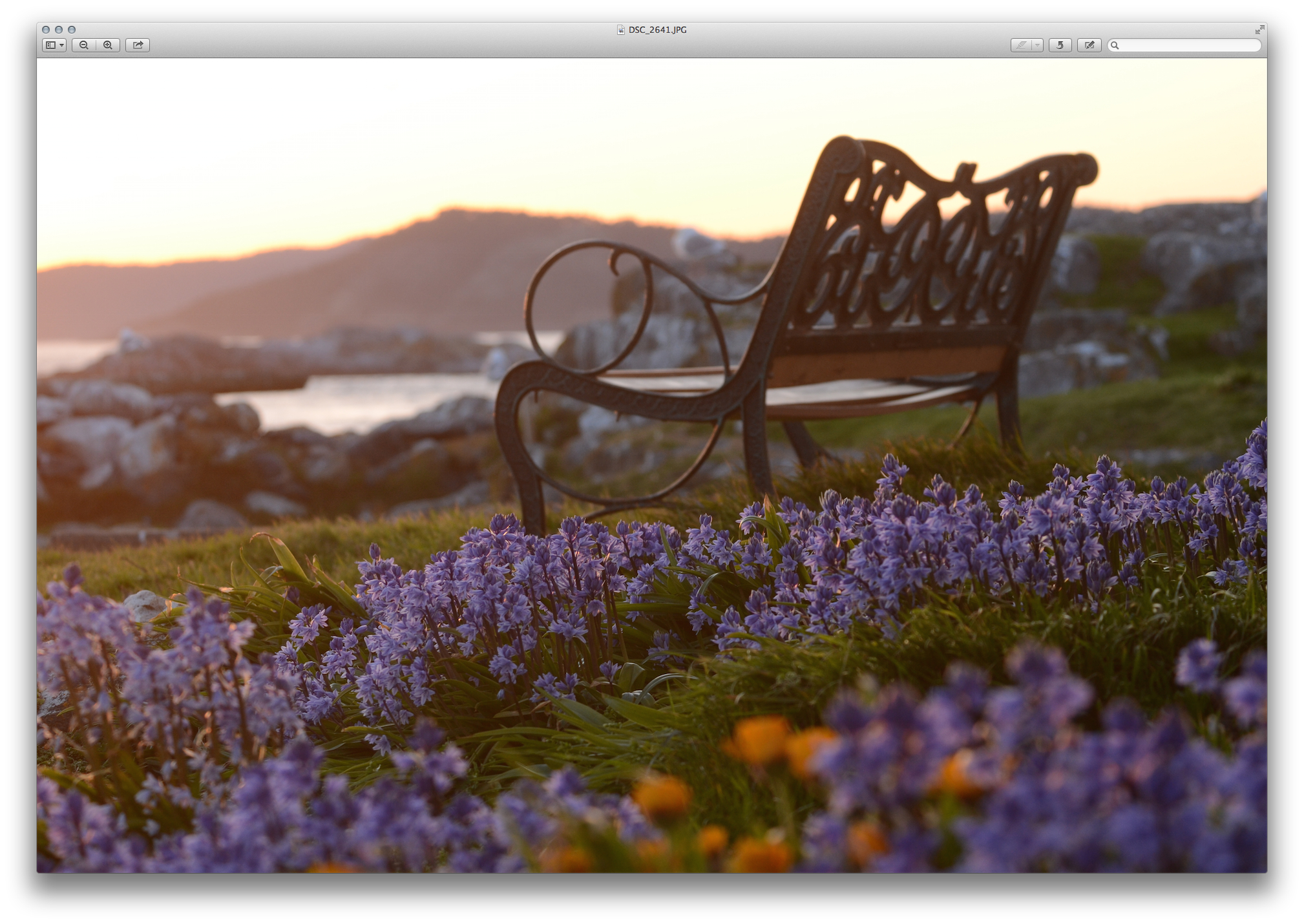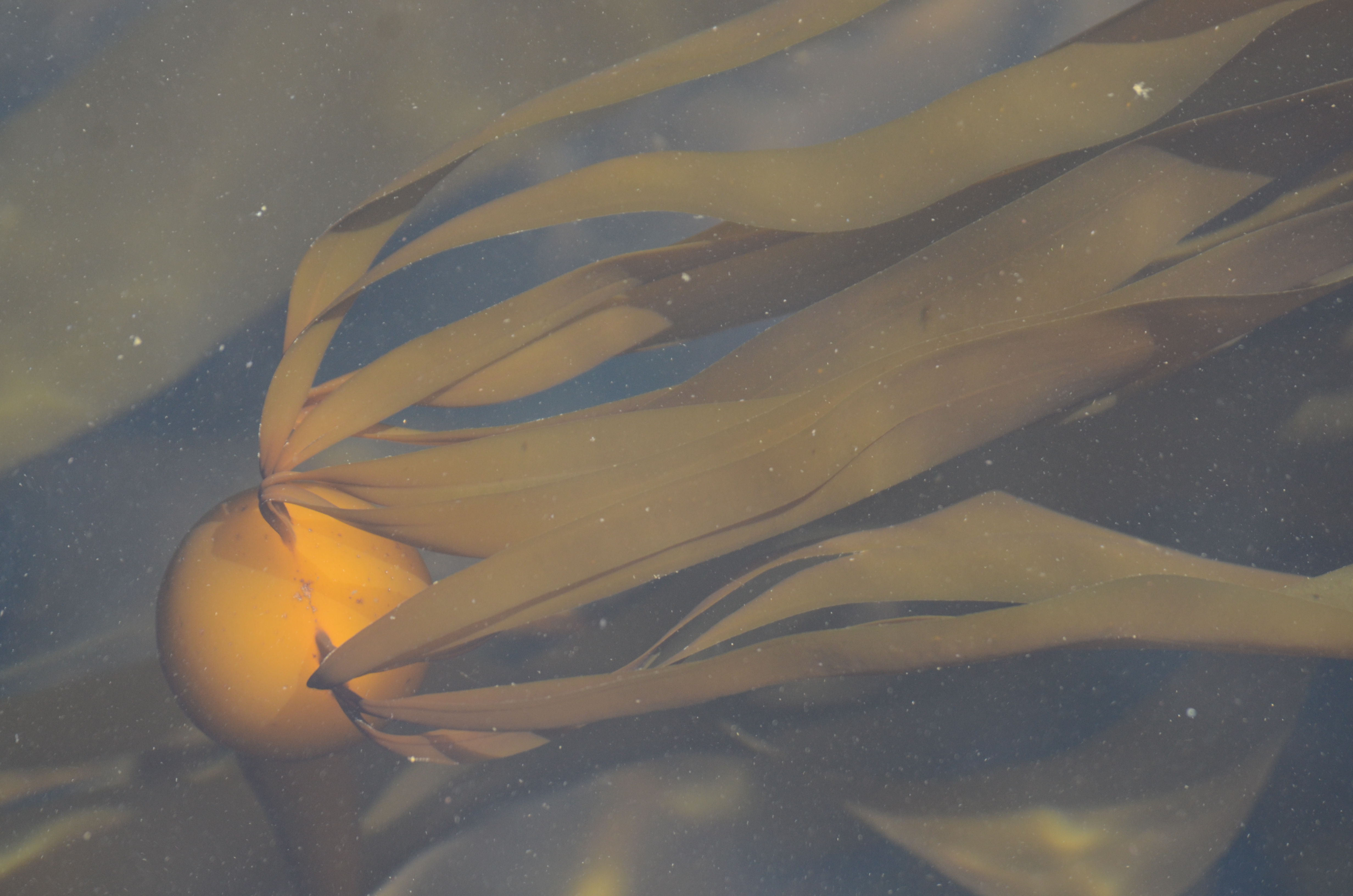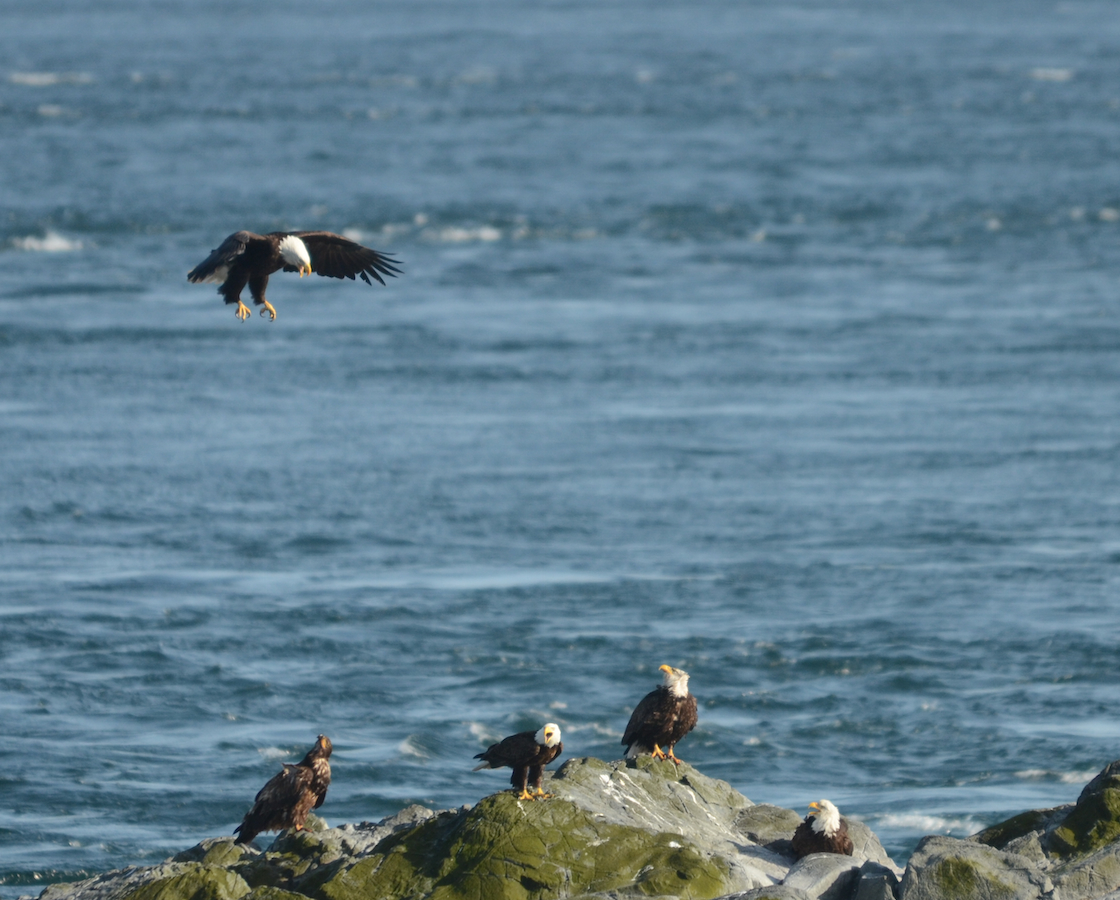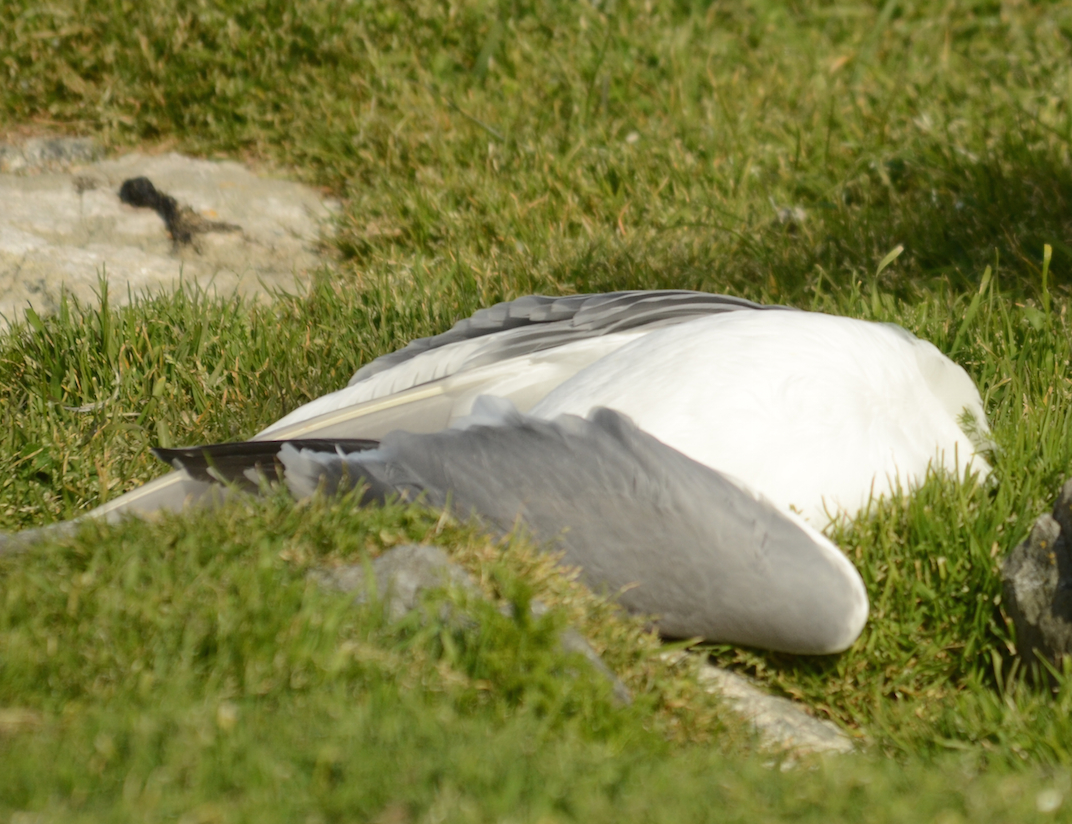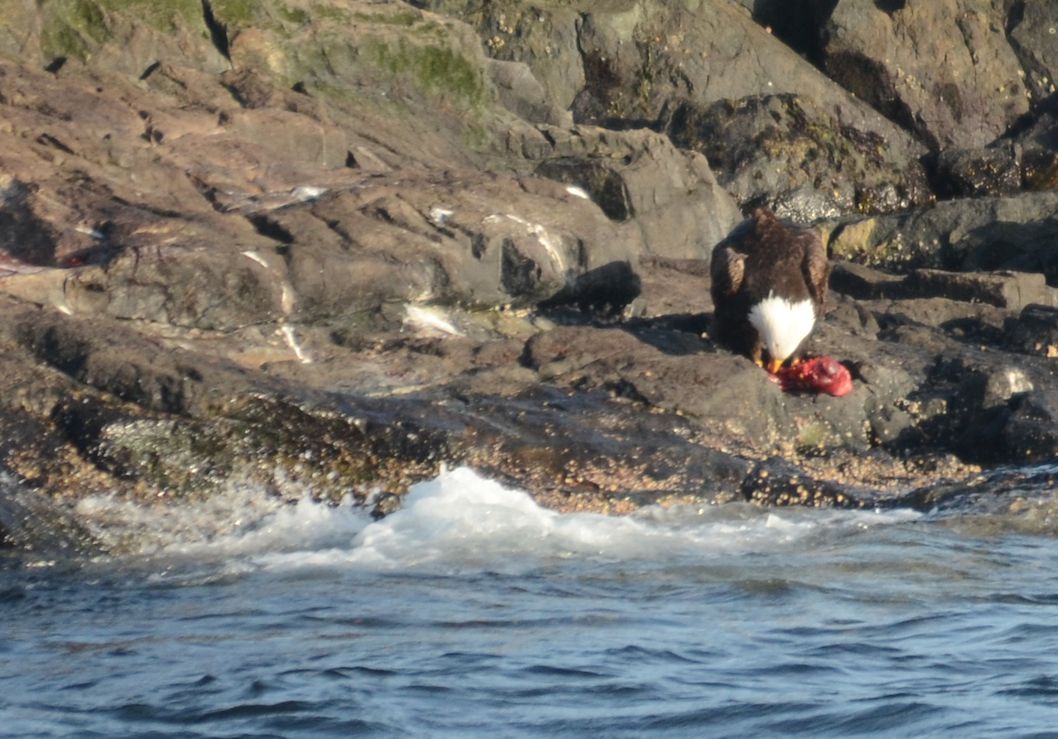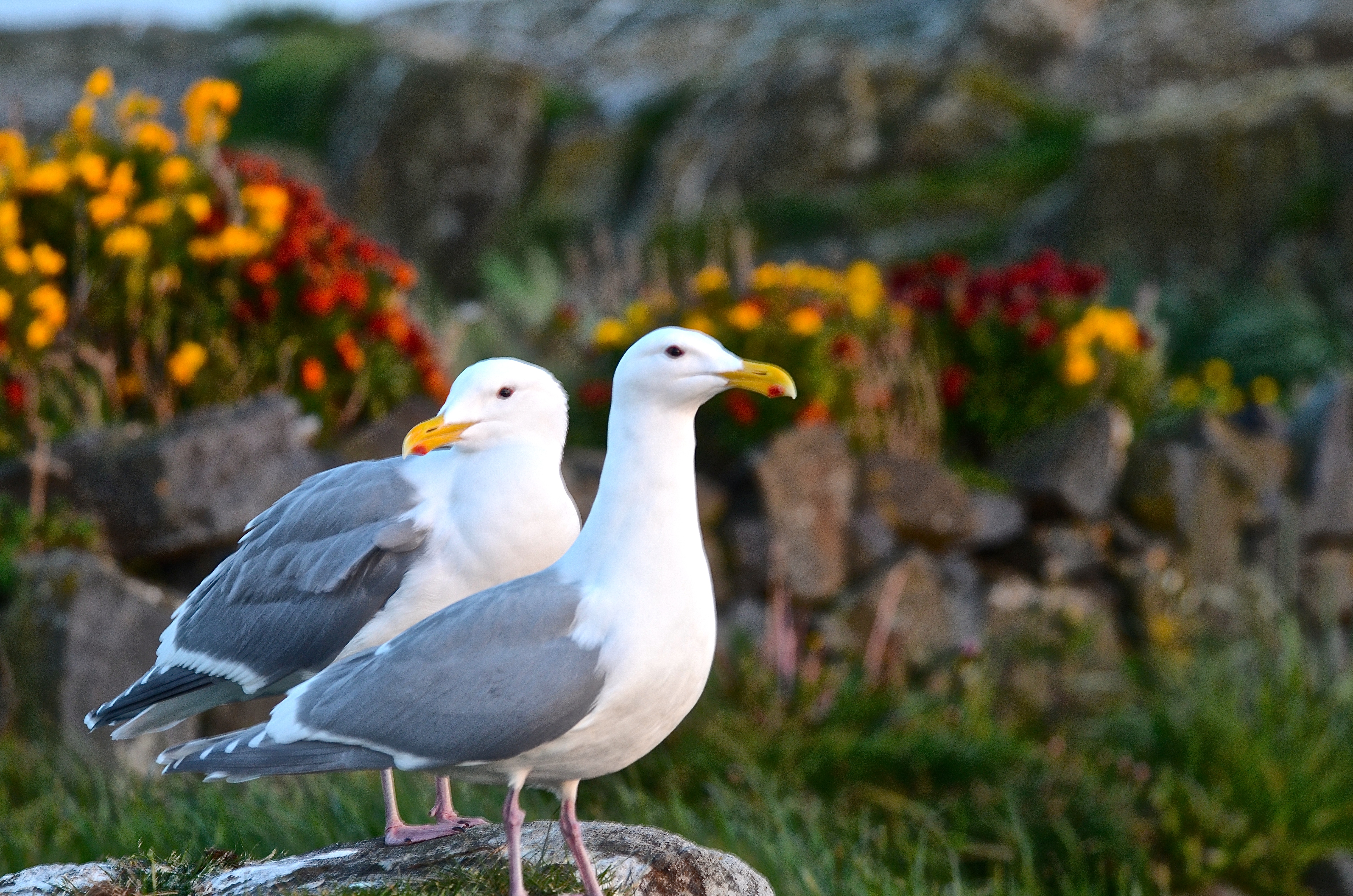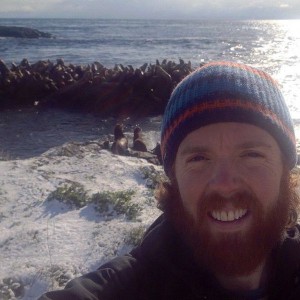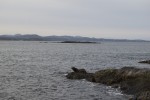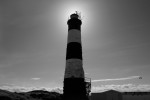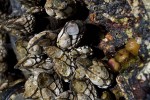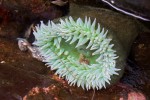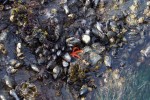The west-southwest breeze sprang up early and quickly cleared the low morning cloud, revealing blue skies and a rippled Strait. With a sustained westerly wind of up to 20 knots the ripples grew into chop with whitecaps by mid-morning. It continued to blow in the afternoon rising to a steady 30 knots with gusts over 35. By early evening with the wind relentless, it is rough and streaked in white.
The barometric pressure, that harbinger of weather, slid almost imperceptibly downwards today, yet the forecast for tonight and tomorrow is for more west winds in the same pattern. There was increasing cloud throughout the afternoon.
There were no whale watching boats observed in the Ecological Reserve today and only one sports fisherman who sped through the ER, cutting over to the southwest, his favorite anchorage spot to fish for halibut, just outside the closed area.
The Northern Elephant Seals have moved to a more convenient spot behind the boathouse, which is closer to the water and more in the lee under the heli-pad hill. The moult continues.
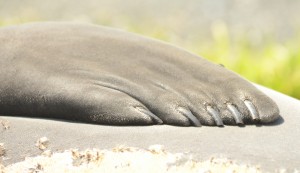
Mirounga manicure. This right “hand” belongs to the biggest male Mirounga (elephant seal) on the island.
It is fascinating to watch the elephant seals use their digits and make what looks like a fist in a mitten of freshly moulted skin and fur.
Many pairs of gulls are mating now and I observed a pair of Black Oystercatchers doing the same. Some of the oystercatchers may already have eggs. I am taking clues from the raven that frequents the island and is always interested in a couple of pairs’ territories. The raven really riles up the oystercatchers, who fearlessly mob it. It was so windy today that while the chase was on, the raven tried a tuck to avoid being hit by an oystercatcher and almost lost control.
The eagles were fishing early but left when the winds came up. The photo below finishes the series I started a few days ago, to show how the eagle tucks the fish up under its tail in flight.
There were no visitors today and maintenance chores were routine.

